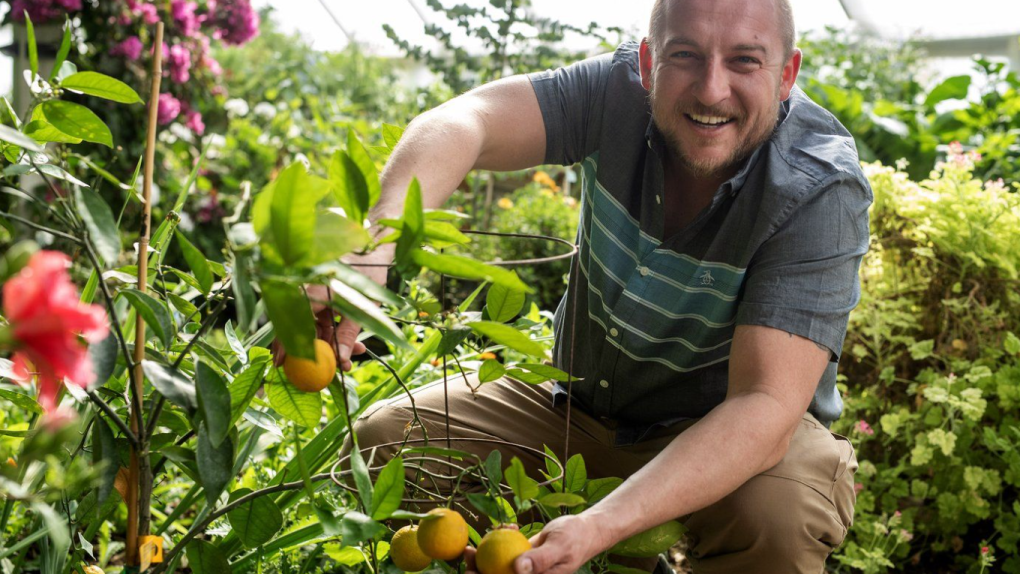Dean Sopher says he’s pessimistic about the world’s future.

It’s why he bought land near Saskatoon and built his own homestead, growing crops and raising livestock to meet his family’s needs.

But Sopher isn’t gardening typical Prairie produce. He’s growing bananas, oranges, lemons, limes, passion fruit, guava and figs in a greenhouse he built.
“It’s real food, eating fresh,” Sopher said in an interview on his farm near Saskatchewan’s largest city.
Concerned about worsening food quality and inflation, Sopher said he built his greenhouse about three years ago and harvested his first banana crop in December. He said the roughly $60,000 greenhouse was designed to optimize the heat and light from the sun.
“Once you have the structure properly designed, insulated, and well built, you can grow pretty much anything here,” he said.
While Sopher has moved the needle on what can grow on the Prairies, researchers say it’s unlikely tropical fruits will sprout from open fields in the future as the climate changes.
However, they say farmers may instead grow other types of grains and legumes, such as corn and soybeans, in regions where that’s currently not feasible.
In a scientific literature review, researchers at the University of Alberta found the Prairies have become hotter and drier over the last 120 years. There has also been less snowfall and more disruptive weather, the researchers found.
While it could mean more corn and soy in some areas, higher temperatures may cause some pests to flourish and create additional challenges to producers.
Associate professor Emmanuel Mapfumo of Concordia University of Edmonton said farmers are resilient and will continue to adapt.
Some strategies include zero tillage, rotating crops, growing varieties that are drought resistant and changing seeding rates.
“There’s no one solution,” he said.



Comments